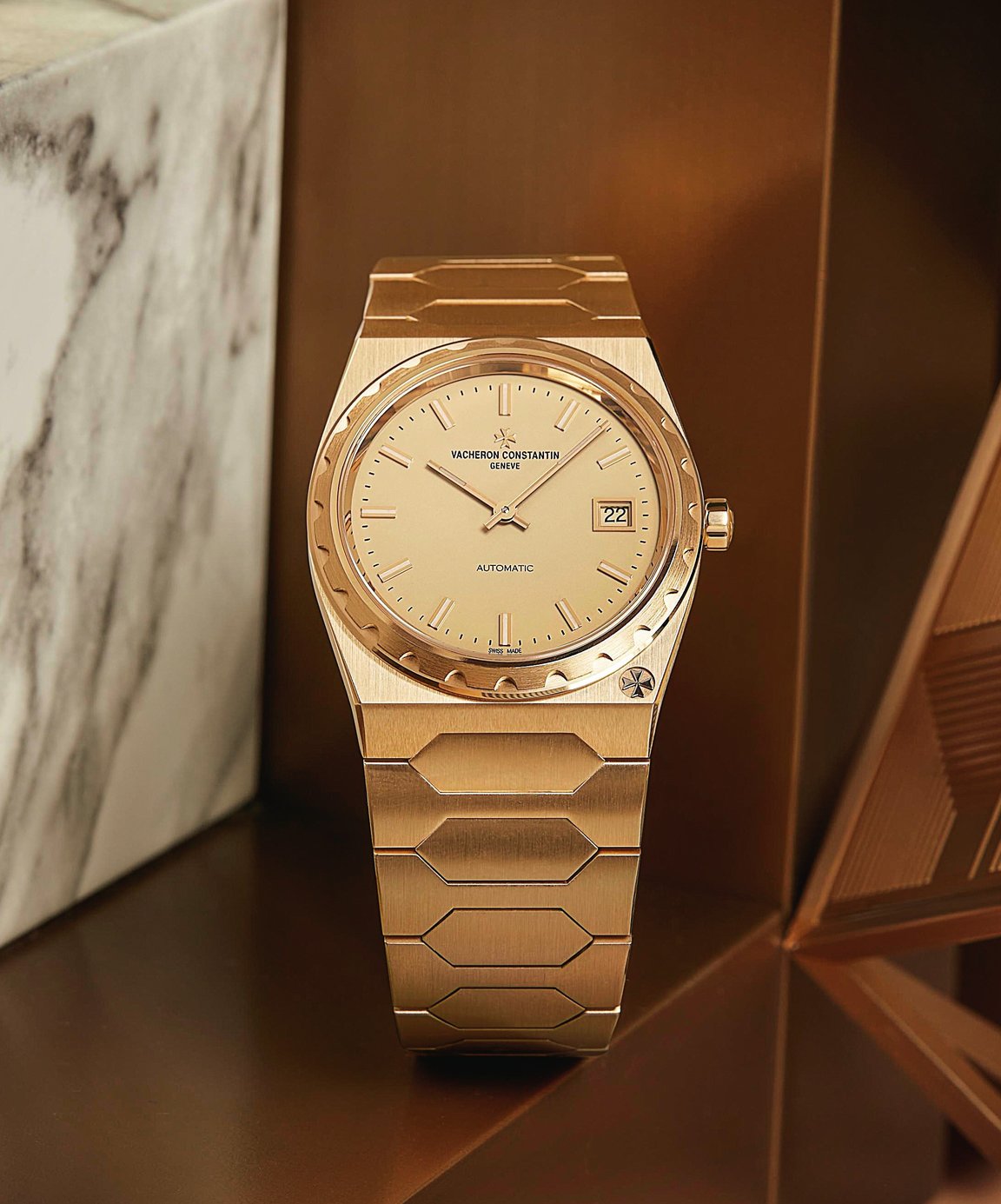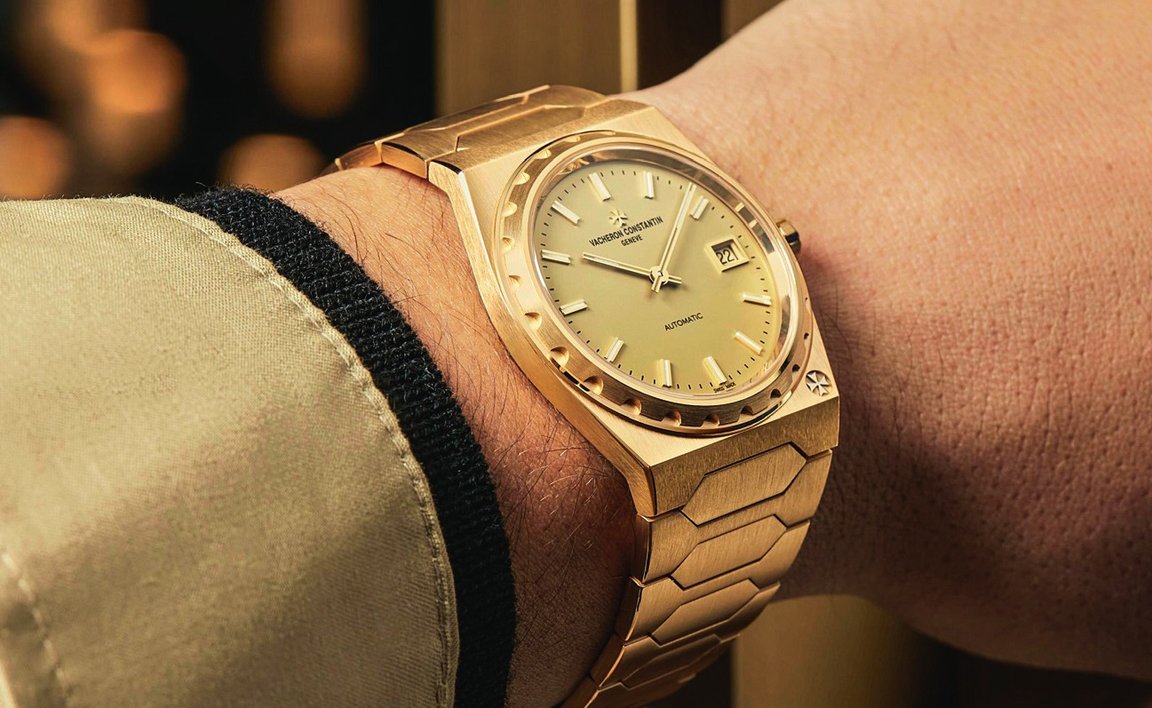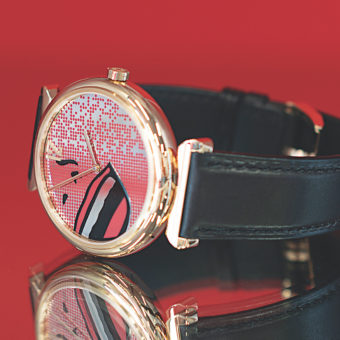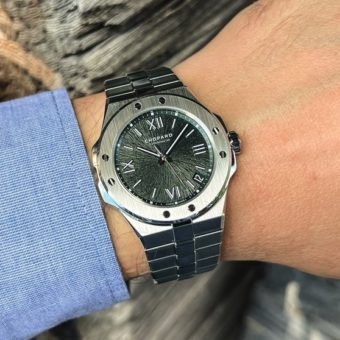This article was originally published in the November/December 2022 Issue of the WatchTime print magazine.
One of the most unexpected releases at Watches and Wonders 2022 was undoubtedly the re-edition of Vacheron Constantin’s Jumbo version of the “Triple Two” in 37 mm in 18k 3N yellow gold.

Vacheron Constantin’s original 222 was launched in 1977 for the 222nd anniversary of the maison. The watch’s design marked a turning point in the history of the manufacture, allowing it for the first time to tap into the then revolutionary world of “sporty-chic” luxury watches. Among the various existing 222 references, the one chosen for the return as part of the Historiques collection (fittingly in a year with three twos) was the larger Reference 44018 in 18k 3N gold with a 37-mm diameter. As a result, and especially in a time where both the industry and collectors are still heavily focusing on stainless-steel watches with integrated bracelets, the ultra-rare Historiques 222 in yellow gold (Ref. 4200H/222J-B935) now serves again as a bold statement, and as an even clearer sign that Vacheron Constantin did not choose to simply follow a trend with the Historiques 222, but instead has created one of the most admired watches launched in Geneva this year.

In 1963, Vacheron Constantin had presented its first model adapted to the contingencies of working life: the Turnograph Reference 6782, a name derived from its bidirectional rotating bezel with a 15-minute graduated scale. The shape of the baton-type hands and the geometry of its straight hour markers did not go unnoticed, even though the model had a relatively short lifespan. In 1975, the maison made a new foray into “the field of urban watches” with the Chronomètre Royal reference 42001. With its special-shaped case, combined with a rounded octagonal bezel, this first Vacheron Constantin creation in steel with an integrated bracelet opened up new style perspectives for the brand. These were confirmed two years later with the 222 designed by Berlin-born Jörg Hysek, whose modern style retains Vacheron Constantin’s inherent elegance and attention to detail. “I wanted to design an elegant sporty timepiece while striking the right balance between these two elements to fit in with Vacheron Constantin’s classic and refined universe,” Hysek said.

In addition to being a new model with integrated bracelet, the 222 from 1977 introduced a functional architecture with its flat base topped by a prominent fluted bezel. Its monobloc case, which required the movement to be cased up from above, was water resistant to 120 meters due to its screw-down bezel. Still, the 222 boasted impressive thinness at 7 mm, thanks to its ultra-thin movement (the 1121 was based on the famed 920 from Jaeger-LeCoultre) measuring barely 3.05 mm and driving indications of the hours, minutes and date. The baton-type hands and straight hour markers similar to the 1963 Reference 6782 Turnograph watch represented an understated and refined aesthetic on one hand, robustness on the other, thanks to its bracelet screwed to the case middle and featuring large hexagonal central links. Initially presented in a 37-mm version nicknamed “Jumbo,” the 222 was subsequently launched in 34-mm and 24-mm steel, white, yellow-gold or two-tone iterations, polished or gem set but always adorned with the maison’s Maltese cross emblem nestling in the right-hand corner of the case at 5 o’clock. Remaining in limited production until 1985 (only around 500 to 700 Jumbos were made), the 222 is now regarded as one of the founding members of the “sportychic” luxury watch club — a category that had and continues to have a huge impact on watchmaking history. Perhaps more importantly, the 222 did not attempt to duplicate the octagonal shape of the Royal Oak and Nautilus, but instead set its own tone.

For 2022, Vacheron Constantin presents a contemporary re-edition of the 37-mm-diameter yellow- gold 222 “Jumbo.” The re-edition in the Historiques collection is faithful to the original model, albeit with a few adjustments in the interests of comfort, aesthetics and enhanced reliability. The case adorned with a Maltese cross emblem at 5 o’clock has an exhibition back serving to reveal the new-generation in-house Caliber 2455/2 featuring an oscillating weight redesigned for this model and quickset date. Operating at a rate of 28,800 vibrations per hour, it offers both precision with a level of finishing just as meticulous as that of the original model. The aesthetic codes of the initial 222 model have been respected: a gold-toned dial with straight hour markers and batontype hands whose luminescence takes on a green-tinted hue at night, a reference to the tritium used on the original 222. The articulation of the bracelet has been redesigned to ensure a more ergonomic feel, the clasp is significantly better.
While the 222 is often regarded as the predecessor of Vacheron’s highly successful Overseas collection, history tells a different story. When asked in 2020, Vacheron’s Director of Style and Heritage Christian Selmoni was very clear: “We don’t really consider the Overseas an evolution of the 222. The common points between the two watches are the barrel-shaped case and what we call the flat-table bezel, but the bracelets and their incorporation have always been very different.” In addition, the 222 was discontinued in 1985 and replaced by the 333, which retained the integrated bracelet but instead came with an octagonal case. The Overseas, on the other hand, was introduced in 1996, leaving an 11-year gap between the two models. More importantly, the satin finish of the case (the Overseas has more polished surfaces than the 222) and bracelet, the much more exclusive production numbers of the modern 222 and the integration into the Historiques collection are clear signs that this model is a heavyweight on its own, and not just because of its actual weight of 205 grams.

Speaking of gold, while often called the “Holy Trinity” of watches, the Royal Oak, Nautilus and 222 in stainless steel changed the luxury watch industry forever, by simply daring to be more expensive than similar models in gold. The modern 222 manages to make an even more important statement: even as a massive yellow-gold watch, it still manages to look more casual than most stainless-steel watches with an integrated bracelet. And it dares to be as luxurious as a modern “sporty-chic” watch can be, and that means its impact on the perception of watches made of precious metal cannot be underestimated.

On a more practical note, the 222 doesn’t have an adjustable bracelet, and no second hand, and the case offers 50 meters of water resistance — which is less than on the original (which also had a thinner movement), but more than adequate, and it is safe to say that any watch lover will prefer having a sapphire-crystal caseback on a watch like this. Lastly, the comparatively low production numbers (don’t expect three digits per year) and the hugely successful reception in Geneva mean that this watch is currently more difficult to find than some of its stainless-steel alternatives. The 222 is exclusively available at the brand’s boutiques. It was launched with a retail price of $62,500; the current list price has been adjusted to $69,000.
To learn more about Vacheron Constantin, click here, and to subscribe to the WatchTime print magazine, click here.







Definitely interested – please call me at 202-255-9540 tomorrow. Thanks